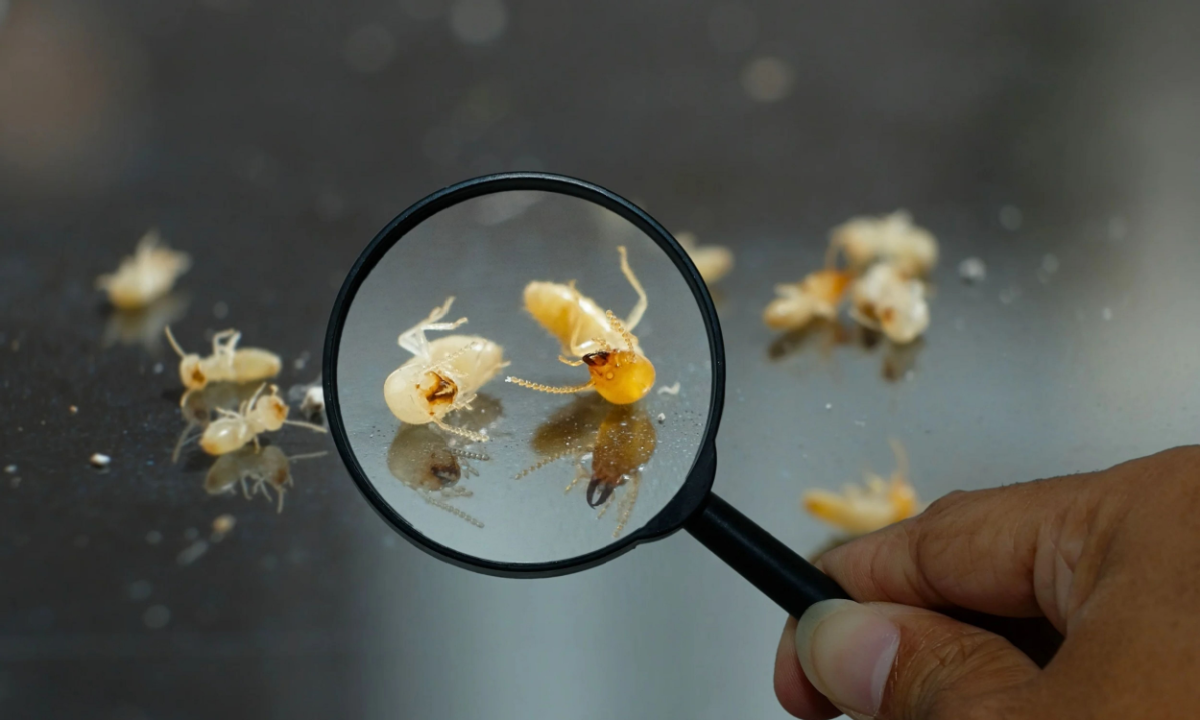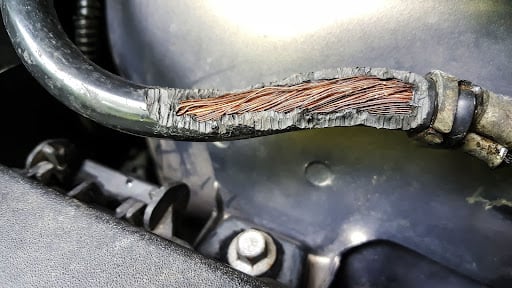The common Cockroach in New Jersey is an insect that strikes fear into home and business owners alike.
Unfortunately, the Tri-state area is home to several varieties of cockroaches, most commonly the American Cockroach, the German Cockroach, and the Brown-Banded Cockroach.
These everyday household pests are renowned for their vigor, persistence, and stealthy ability to hide large-scale infestations.
Thankfully, there are several tips and tricks to resolve an infestation, including DIY methods and professional treatments, as well as ways to prevent these pests from coming back.
Why Are There Cockroaches in My Home?
It’s essential to understand where cockroaches come from to stop them.
Cockroaches are creatures of necessity, settling anywhere that their primary three needs can be met:
- Food
- Water
- Shelter
Since your home likely has a fair share of each, it’s reasonable that cockroaches may opt to take up residence there.
In many cases, cockroaches may infest a relatively clean home, as long as it has access to any of these needs in a warm basement or attic.
The key to stopping an infestation is first to identify one. Unfortunately, when it comes to cockroaches, it often only takes one to tell you that more are lurking around.
Do I Have A Cockroach Infestation?
Cockroaches are nocturnal pests. For this reason, it isn’t abnormal for an infestation to go unnoticed for weeks or even months.
If you suspect an infestation but can’t locate any physical insects, look out for these tell-tale signs:
- Droppings: Think black pepper. These tiny droppings will often be found scattered near their feeding sites and dwellings.
- Foul Odors: Any distinctive, musty odor can signify an infestation. As the size of the infestation grows, so will the smell!
- Egg Capsules: Cockroaches lay their eggs in capsules–reddish-brown, pill-like, leathery sacks filled to the brim with eggs, containing about 16-50 eggs.
- Shedded Skins: Like most arthropods, cockroaches shed their skins multiple times throughout their life cycles. The presence of cockroach exoskeletons is a definite sign that you may have an infestation.
- Smear Marks: Check baseboards and walls for dark-colored smear marks. Some cockroaches drag their abdomens along surfaces they’re standing on as they walk, leaving these tell-tale markings.
11 Ways to Get Rid of Cockroaches.
If you’ve confirmed the presence of cockroaches in your home, several treatment options exist to get rid of them. Our pest experts have compiled a list of the most effective remedies that can be done DIY or with the help of a professional.
Glue Traps
Glue traps are an effective means of cockroach removal and can even be used on other pests, such as carpenter ants. These sticky, adhesive-lined sheets are often treated with a bait that’ll attract the insects; once they walk onto the strip, they’ll quickly become immobilized and die.
While effective against small infestations, you may need more extensive treatment options for a full-blown cockroach infestation.
Bait Stations
Bait stations are one of the safest forms of administering an insecticide due to their enclosed design, which makes them only accessible to insects. These stations attract the cockroaches to a slow-acting bait, allowing them to take the insecticide back to their dwellings and share it with other insects. By the time the insecticide starts to set in, several insects will have been exposed to the toxic chemicals and perished as a result.
Liquid Concentrate
Liquid concentrates can come in several formulas, from growth inhibitors to deterrents, to pure insecticides. These chemicals are generally administered directly to cockroaches or high-traffic areas, ensuring the insects come into contact with the chemicals. Be sure to check the toxicity of any liquid concentrate and consult with a professional before use for added safety.
Diatomaceous Earth
This natural insecticide is highly effective and safe for use around pets and families. While it may cause mild irritation, the product contains no active chemicals or insecticides. Diatomaceous earth is spread in thin layers around areas with high pest traffic. The product lacerates the insect’s exoskeleton and dehydrates it, leading to death.
Boric Acid
Boric acid is a favorite for DIY-ers. This chemical contains no insecticides or deterrents, meaning that cockroaches won’t actively avoid it; however, repeated passes through the acid will lead to death. Try mixing the chemical with powdered sugar or other baits and spreading it to high-traffic areas.
Baking Soda
While cockroaches won’t seek out pure baking soda, mixing it 50/50 with sugar or other baits will attract insects. Cockroaches tend to die off within hours of ingesting the mixture, so this could be a cheap option for those on a budget.
Growth Regulators
Growth regulators are often found in liquid form and are an alternative to contact killers or bait stations. These chemicals prevent juvenile cockroaches from reaching sexual maturity, ensuring they can’t reproduce. This DIY method is great at slowing or even stopping infestations altogether while you apply other treatment methods.
Essential Oils
While reviews are mixed, some claim that essential oils such as peppermint and tea tree do an excellent job of deterring cockroaches. When misted near high-traffic areas, you may note a reduction in pest activity.
Insecticides/Contact Killers
Generally used as a last resort due to the harsh nature of the chemicals, insecticides are highly effective roach killers, particularly contact killers. These chemicals are typically neurotoxic in nature, directly affecting the insect’s nervous system and leading to death in seconds.
Sealing Entry Points
Arguably, the best way to prevent an infestation is to keep cockroaches out in the first place! Sealing any potential entry points–such as gaps in siding or cracks in window and door frames–with appropriate caulking can prevent them from gaining entry into your home and wreaking havoc.
Professional Assistance
If all else fails, don’t hesitate to contact a qualified pest professional. With over 25 years of experience, our experts at Anchor Pest Control can assess your infestation, map out a treatment plan, and execute the extermination, often in as little as a single day!
Cockroach Prevention Tips
Unfortunately for homeowners, these pests don’t ask permission before they move in, and they’re notoriously difficult to evict. As a result, it’s generally a good idea to focus on preventative maintenance as well as treatment, making your home less inhabitable to cockroaches in the first place. Ways to do so include:
- Managing Indoor Trash Receptacles: Cockroaches will consume just about anything they can get their mandibles on. Everything from pet food to table scraps from an open trash can is on the menu. Try utilizing a trash can with a lid and taking the garbage out regularly to prevent attracting cockroaches.
- Removing Excess Moisture: Like all living things, cockroaches require water to survive. By stripping them of water sources, they’ll likely be forced to migrate elsewhere. Try taking a thorough walk around your home, checking for leaky pipes, dripping faucets, or excess dampness in basements. Repair any sources of moisture and watch the bugs disappear!
- Don’t Leave Dishes In The Sink: Have a habit of leaving dirty dishes in the sink? You may be attracting cockroaches. Instead, try rinsing them clean at the least, or preferably loading them into the dishwasher immediately.
- Eliminate Hiding Places: Cockroaches are naturally shy insects that tend to avoid humans if possible. For this reason, it’s good practice to eliminate potential hiding places in your home, ensuring no bugs are hiding out in dark corners.
Concluding Thoughts
Whether you prefer non-toxic treatments, preventative maintenance, or jumping directly to the can of contact killer under the sink, hopefully, you’ve learned a thing or two about taking care of cockroaches at home. Of course, don’t hesitate to reach out to your local exterminator. Professional pest control can often be more affordable, safer, and effective than DIT treatment methods.
How to Get Rid of Cockroaches: FAQ
Is it ok to step on a cockroach or squish it?
Most professionals recommend against squashing cockroaches. Not only do cockroaches release an acid that attracts other cockroaches, but some cockroaches can survive getting squished. According to the WHO, squishing a cockroach may also present several hygiene risks for you or your loved ones.
How long will a cockroach stay in your house?
Cockroaches may occupy a home for their entire lifespan (20-30 weeks) as long as they are properly fed and sheltered.
What treatments are safe to use around pets and families?
While some may cause minor skin irritations, the least toxic treatments include diatomaceous earth, baking soda, boric acid, and essential oils.




